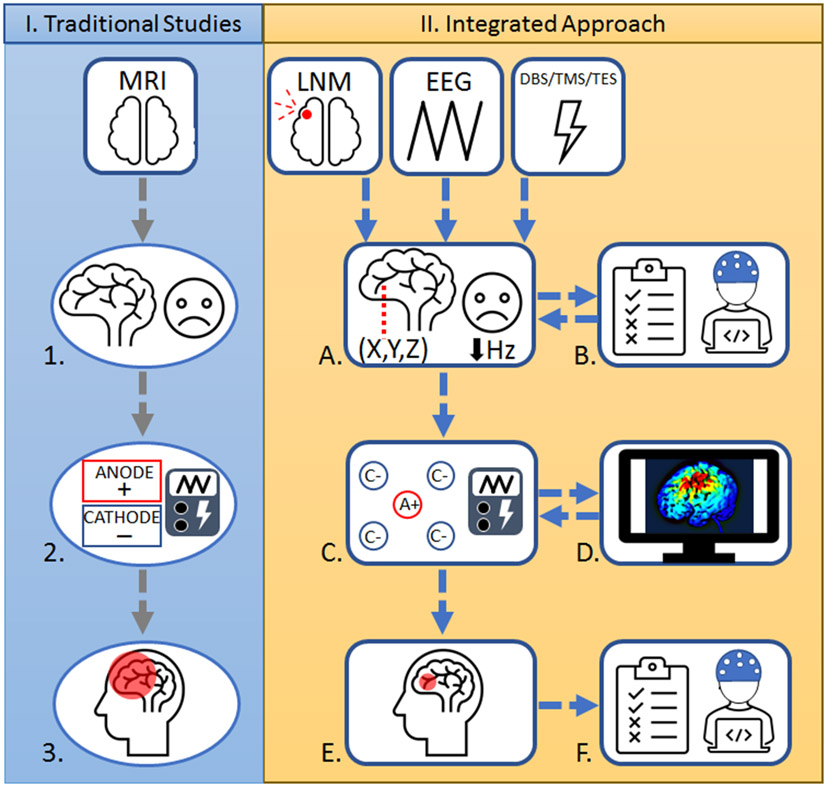Figure 1.
Comparison of traditional tES studies and integrated approach for tES. I. Traditional Studies: 1. Anatomical identification: In the past, research ROIs were primarily based in cross-sectional neuroimaging studies, many of which are based in correlational relationships between brain and behavior rather than causally inferred connections. 2. Utilization of large sponge electrodes: Application of large sponge electrodes may lead to low probability of replication and encompass a large portion of the skull, leading to less precise targeting of brain regions. 3. Diffused electrical current and low focality: The use of sponge electrodes may lead to low focality and produce diffused current that may influence off-target brain regions, which can hinder the effects of tES. II. Integrated Approach: A. Integration of neuroimaging modalities and frequency dependent characteristics: Incorporating results from causally inferred relationships (e.g., LNM studies) to complement past cross-sectional results while retaining important frequency characteristics from electrophysiology studies (e.g., EEG studies). B. Baseline clinical interviews, behavioral tasks, and electrophysiological recordings: Implementation of baseline symptom measurement, incorporation of behavioral tasks, and electrophysiological recording can be used for personalizing treatment protocols geared toward identifying deficits in task performance or altered brain activity . C. Employing HD-tES with high reproducibility of electrode montages: Utilizing HD-tES electrodes may increase reproducibility of complex montages for future investigations to potentially replicate outcomes in psychiatric populations. D. Incorporation of electrical field modeling: Modeling techniques increase the probability of stimulating the ROI and may prove beneficial in developing personalized treatment while retaining individual brain information. E. Increased focality and low diffusion of current: Individual head modeling and sophisticated HD-tES electrodes can decrease the diffusion of the current and may lead to more focal stimulation and fewer off-target effects compared to I.3. F. Follow-up symptom assessments, behavioral tasks, and electrophysiological recordings: Incorporating appropriate follow-up assessments may help to determine the association between targeted brain stimulation, neurophysiology, and behavior changes. A+, anodal; C−, cathodal; DBS, deep brain stimulation; EEG, electroencephalogram; HD, high-definition; Hz, Hertz; LNM, lesion network mapping; MRI, magnetic resonance imaging; ROI, region of interest; tES, transcranial electrical stimulation; TMS, transcranial magnetic stimulation; (X,Y,Z), coordinates in the brain.

